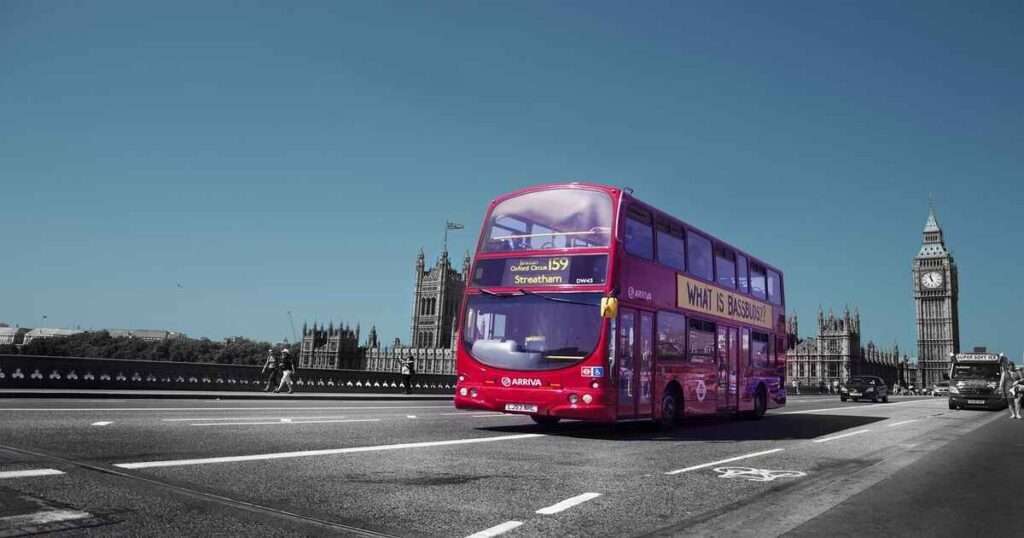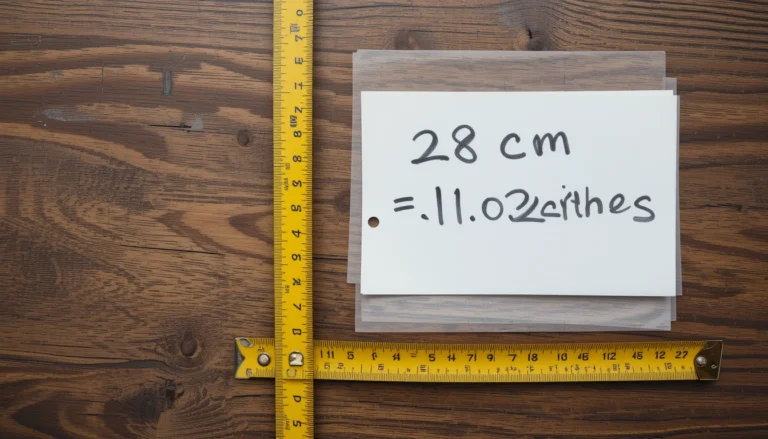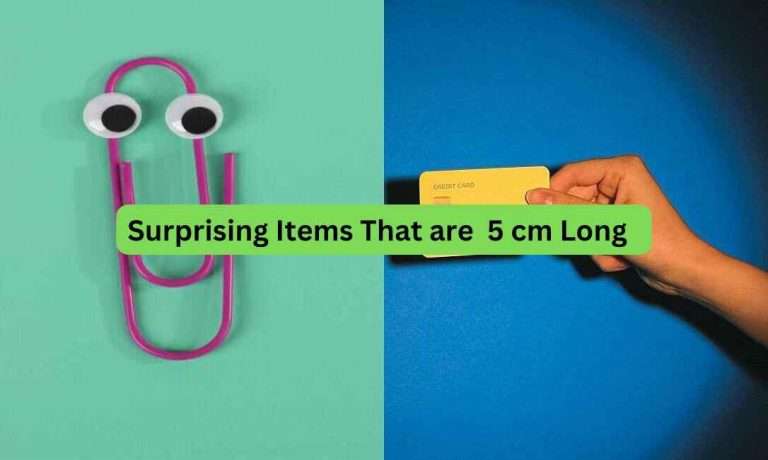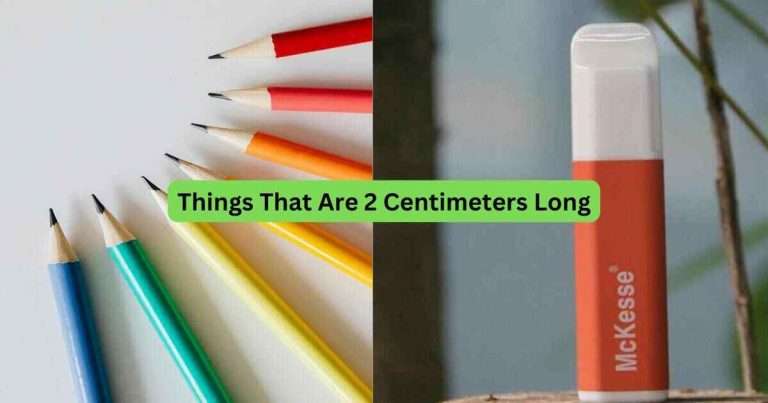When we think about size, we don’t always realize how big or small things are. Knowing how long 30 feet is can help us picture real distances around us. This number shows up more than we think—in homes, parks, sports fields, and city streets.
Thirty feet might sound like a lot, but it’s easier to understand when we compare it to things we see every day. For example, a school bus, a small room, or even a big truck are all close to 30 feet long. If you’re moving furniture, building something, or just curious, this guide will help you picture it better.
In this article, we’ll examine 11 common things that are about 30 feet long so you can clearly understand what that distance looks and feels like in real life.
How Long is 30 Feet?
Thirty feet is the same as 360 inches or 9.14 meters. That’s a little less than half of a cricket pitch and almost the same as a standard bowling lane, about 60 feet long. If you like sports, that helps you see how far 30 feet is.
In everyday life, 30 feet is about the length of a regular school bus, which usually measures around 30 feet long. Inside a house, it can match two small rooms combined—like a space 15 feet wide and 12 feet deep. Think about three U-Haul vans, each around 10 feet long, parked in a row. That’s 30 feet too.
You could also picture a tall telephone pole, a large billboard, or three 10-foot Christmas trees stacked on each other. Even some parking lots and sidewalks stretch this wide, showing how 30 feet fits into real places we walk through daily.
The 11 Common Items That Are 30 Feet Long or Big
Here’s a detailed look at 11 common items approximately 30 feet long, complete with descriptions and how they relate to everyday life. This comparison helps bring the abstract number to life, making it easier to imagine and understand this length.
1. A 3-Story Building

A typical three-story building is about 30 to 35 feet tall (roughly 9 to 10.6 meters). The ceiling and floor structures on each floor are around 10 feet high. That means a building with three levels is about the same length as a school bus standing on its end.
You’ll see buildings like this in most towns—used as homes, offices, or shops. They give you three full floors without taking up too much space on the ground. That makes them popular in busy cities where land is limited.
Standing next to one helps you imagine how long 30 feet is. If you ever see fire trucks nearby, notice their tall ladders—they’re built to reach the top of a 3-story building for safety. These buildings are tall but not too tall, making them a bright and familiar example of 30 feet in real life.
2. Half of a Cricket Pitch

A full cricket pitch is 66 feet long (about 20 meters), so half of it is 33 feet long, which is very close to 30 feet. This part of the pitch is super important because it’s where most of the action happens. The bowler runs and throws the ball, and the batsman gets ready to hit it—all in this space.
It may look short, but these 30 feet can decide the game. Bowlers use this distance to control how fast or tricky the ball is. Batters have only a second to think and swing. That’s why this part of the pitch matters so much.
If you’ve watched cricket on TV or at a field, you’ve seen how quickly things happen in just 30 feet. It’s a great way to understand how far that distance is—fast, exciting, and energetic.
3. A London Bus

Like the New Routemaster, a typical London double-decker bus is around 36 feet long, slightly more than 30 feet. That’s almost as long as three cars parked in a line! While not exactly 30 feet, it still helps you imagine how big that length is.
These red buses are super famous. You’ve probably seen them in movies or pictures taken in London. They can carry up to 87 people, with seats on two floors. Even though they’re long, they’re built to move easily through London’s tight streets.
Seeing one up close really helps you understand the size of 30 feet. Whether riding it across the city or spotting it from a distance, it shows how something large can still fit into everyday life. For people in London, these buses are more than transport—they’re part of the city’s story.
4. Half a Bowling Lane

A bowling lane is usually 60 feet long, so half is 30 feet. That’s the space from the foul line to the middle of the lane. This area is really important when you bowl because it’s where the ball starts to roll and pick up speed.
Bowlers use this 30-foot stretch to control how the ball moves. They focus on their aim and form right here. If you throw the ball just right, it can curve or “hook” in the last half and hit the pins better.
Even pros pay close attention to the first half of the lane. It helps them get more strikes! Knowing how long 30 feet is—and how it fits into a bowling lane—makes the game easier to understand and more fun to play.
Read More >> 11 Amazing Things That Are 50 Feet Long
5. Three U-Haul Trucks

Imagine you’re moving to a new house. A 10-foot U-Haul truck is a popular choice for small moves. Now, picture three of these trucks parked one after another. That adds up to 30 feet, about the size of a big room or a small yard.
Each truck is 10 feet long, 7 feet 8 inches tall, and 6 feet 5 inches wide. It holds around 402 cubic feet of space for a studio apartment. When you line up three of them, it’s easier to picture what 30 feet looks like.
This helps you plan better when moving. You’ll know how much space your stuff might take up or how far 30 feet stretches in real life. Thinking about trucks makes it easier to understand this measurement and prepare for your next move!
6. Three Table Tennis Tables
Think of three table tennis tables placed end-to-end. Each table is about 9 feet long, so three make a total of 27 feet—close to 30 feet! It’s an easy way to imagine how long 30 feet is.
Each table is also 5 feet wide and 2.5 feet tall, with a 6-inch-high net in the middle. This setup gives players enough room to move around, swing the paddle, and react quickly.
Whether with friends or watching a fast game, imagining 30 feet as the length of three ping-pong tables helps you see how much space the game needs. It also shows that quick steps and fast hands are important in such a small space!
Using table tennis tables representing 30 feet makes this measurement simple, fun, and easy to understand.
7. Telephone Poles

A typical telephone pole is about 30 feet tall, standing high in cities and the countryside. Some poles can be taller, but 30 feet is a good size to imagine when considering their height.
These poles carry important things like electric wires, phone lines, and internet cables. They help keep us connected to the world, bringing power and communication to homes and businesses.
Walking or driving past these poles, you’ll see many lined up, usually about 125 feet apart. Workers often climb these poles to fix wires and ensure the operation of things like your internet or streetlights.
Knowing that a telephone pole is around 30 feet tall helps you picture this length in real life and understand the important role these poles play in our daily lives.
8. Outdoor Advertising Billboard Structures

Outdoor advertising billboards are often about 30 feet long and stand along highways and busy streets. These big signs are usually between 10 and 14 feet tall, giving advertisers a space of around 420 square feet to show their messages and pictures.
Billboards use bright colors and large letters so people driving or walking by can easily see and read them from far away. Because of their size and location, they are very good at catching attention and helping businesses promote what they offer.
Whether a local shop or a big company, a 30-foot-long billboard helps spread messages to many people. These billboards play an important role in advertising, making sure that ads are noticed by many potential customers daily.
9. Twice the size of a Great White Shark

Imagine the size of a great white shark, one of the ocean’s most formidable predators. A typical great white shark measures about 15 feet long. If you line up two of these sharks end to end, you get a clear visual of 30 feet. This comparison highlights the impressive length of these creatures, showcasing nature’s scale.
Great white sharks often grow to 15 feet, but some can reach lengths up to 20 feet. By aligning two of these predators, you can grasp how much space 30 feet occupies in a very tangible way. This natural grandeur underscores the true size of the measurement, bringing the concept to life.
10. Three Times the Height of a Christmas Tree

During Christmas, big trees often decorate malls and town squares. Most home Christmas trees are about 10 feet tall, but imagine one that is 30 feet tall—three times bigger! This huge tree looks amazing with bright lights, shiny ornaments, and colorful ribbons that catch everyone’s attention.
A 30-foot Christmas tree is like a giant evergreen, such as spruce, pine, or fir. Seeing such a tall tree helps us feel the excitement of the holiday season. These giant trees make public places feel magical and festive.
People love stopping and looking at these giant holiday trees. They bring joy and cheer to winter celebrations, making the season feel extraordinary. These big trees are a perfect way to show the spirit of holiday in cities and towns.
11. One-Third of the De Gooyer Windmill

The De Gooyer Windmill in Amsterdam is a tall and famous building. It stands about 90 feet tall. If you think about one-third of that height, it would be around 30 feet — a big part of the windmill.
This windmill is very important in Dutch history. Long ago, it helped pump water to keep the land dry and safe from flooding. Its tall shape shows how people used innovative ideas to protect their homes.
When you imagine just the bottom third of the windmill, like the base or the first windows, you get a sense of how large and strong the whole windmill is. It’s a great example of old engineering and the power of wind energy.
How to Measure 30 Feet Accurately
Measuring 30 feet correctly is easier when you use the right tools and methods. Here are some easy and practical ways to do it:
Tape Measure: The most common tool is a tape measure. If you have one that’s 25 or 50 feet long, stretch it out to 30 feet. You can mark the spot or measure in parts until you reach the full length. This is great for most projects.
Measuring Wheel: For bigger outdoor areas, a measuring wheel works well. Roll it along the ground, and it counts the distance as you go. This is helpful on uneven surfaces or when you want a quick reading.
Other Methods: If you don’t have tools, try pacing. Measure your step length (like 3 feet) and take 10 steps to cover 30 feet. Or, use a smaller item like a 12-inch ruler or your phone, placing it end to end until you reach 30 feet. These methods work well when accuracy matters, but tools aren’t handy.
Conclusion
Understanding the measurement of 30 feet can enhance our awareness of the world around us, helping us grasp the scale of everyday objects and remarkable human-made structures. Whether visualising the size of a London bus or the vastness of a blue whale, this length helps us connect with the impressive magnitude of nature and human achievement. From the height of bridges to the dimensions of sporting fields, 30 feet is a practical measurement that often pops up in surprising ways, enriching our daily experiences.
Knowing how 30 feet fits into our environment offers fascinating insights in various contexts, like a home improvement project, sports, or exploring the wonders of nature. It’s a versatile unit crucial for understanding the world’s practical and whimsical elements. Whether it’s the towering De Gooyer windmill in Amsterdam or the width of a bowling lane, the length of 30 feet continues to hold enduring relevance, bridging the gap between the abstract and the familiar in our daily lives.
Frequently Asked Questions
1. How can I easily visualize 30 feet?
You can visualize 30 feet by comparing it to common objects such as three sedans parked end-to-end, a school bus, or half a tennis court.
2. Is 30 feet the same as 10 yards?
Yes, 30 feet is equal to 10 yards. Since 1 yard equals 3 feet, multiplying 10 yards by 3 gives you 30 feet.
3. What tools can I use to measure 30 feet accurately?
You can use a tape measure, a measuring wheel, or even a yardstick for precise measurements. If tools aren’t available, you can pace it out using your stride or use objects of known lengths like a smartphone or a ruler.
4. Can I estimate 30 feet without tools?
Yes, you can estimate 30 feet by using your stride length (e.g., if one stride is about 3 feet, take 10 steps) or by referencing familiar objects, such as two giraffes stacked vertically or the length of a bowling lane.
5. How long is 30 feet compared to a room?
A typical house room is much smaller than 30 feet. For instance, a standard living room is about 12–15 feet long. Thirty feet would be the size of two or more average rooms combined.











